The OnGuardACTIVE is an advanced driver-assistance system (ADAS) that helps drivers avoid or mitigate rear-end collisions. Most modern cars and trucks have this system installed.
If you want it disabled, here is a quick step-by-step guide.
How to Disable Onguard Collision Safety System
Step 1: Turn Off the Ignition Key and Disconnect the Battery
It’s not hard to switch off the ignition and disconnect the battery but many forget about this step. We are saying this first so you do remember.
The power distribution center at the front will have major damages if you miss this step.
Step 2: Locate the Power Distribution Center
The next step is to find the PDC after the battery is disconnected. You will find it inside the front left compartment under the driver’s window.
The front of the PDC is a plastic box that’s mounted on the compartment wall with two thumbscrews.
Step 3: Remove the fuse from the PDC
Remove the PDC fuse once you’ve located it. Next, put on the cover back and tighten the thumbscrews.
If you are sure that the PDC is well tightened, undo all the steps you have done. Connect the battery switches and turn on the ignition key to restore your vehicle.
Now you have disabled the onguard collision safety system and can take full control of the car.
How to Disable the Onguard System in a Semi-Truck?
Types of Collision Safety Systems
1. Forward Collision Warning (FCW)
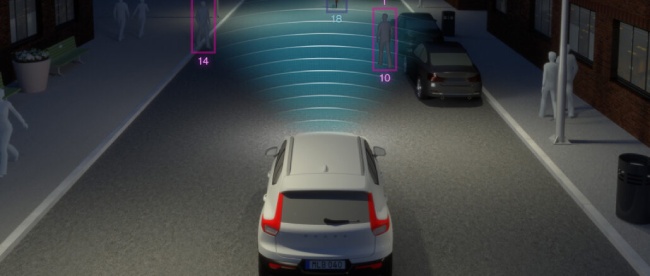
**Photo courtesy: Baby Drive
A Forward Collision Warning system can measure the speed and distance of the vehicle and the objects around it.
The system warns of a potential crash if you get too close to brake your car effectively.
The technology seems reliable enough and has reduced rear-end collisions by 27% so far.
2. Blind-Spot Warning (BSW)
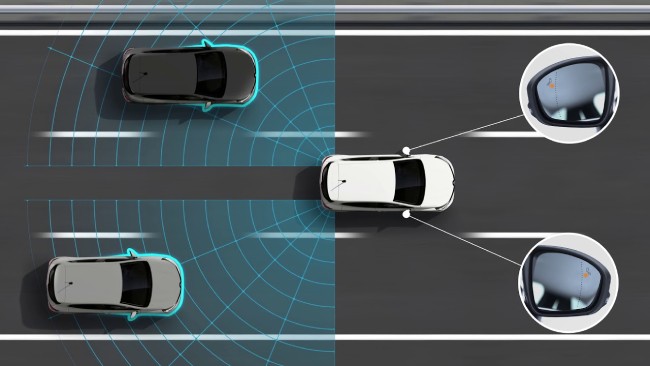
This system helps detect cars in areas that are hard to see by the driver. The system monitors both sides of the car and shows a yellow or red indicator on the side mirror when it detects one. Some of them also emit a warning sound.
Some cars require you to switch on the system manually while some activate it when you drive above a certain speed.
BSW remains active when the transmission is in the Drive or Neutral mode. But you can choose to turn it off anytime.
3. Lane Departure Warning (LDW)
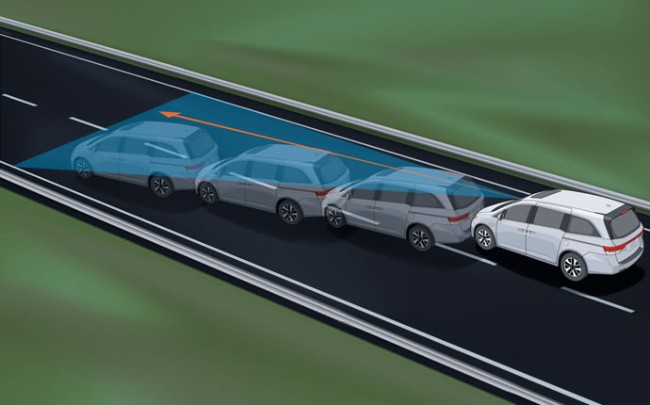
**Photo courtesy: Silko Honda
The Lane Departure Warning system is designed to help avoid crashes when the car drifts or departs from the driving lane. It alerts you when it detects a tire touching a lane marker.
A common warning is a flash indicator with beeps from the corresponding side. In some systems, the steering and the driver’s seat gently vibrate.
However, the system doesn’t alert when the turn signal is on.
4. Cross-Traffic Warning
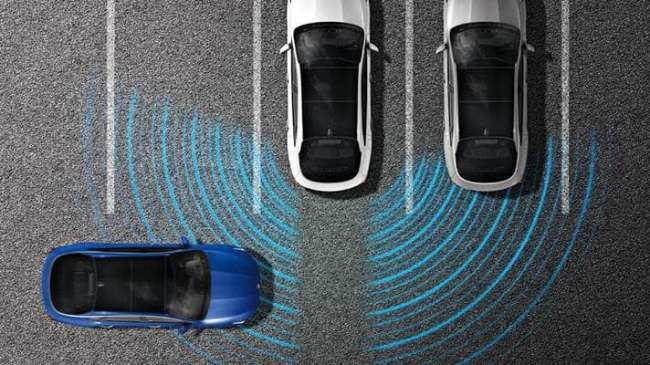
**Photo courtesy: Kia
This system uses lateral side radars to detect passing vehicles and bicycles as far as 50 meters ahead. The alert icon on the mirror appears with an audible warning 2-4 seconds before the car is about to cross.
Some models also show a pop up alert on the dashboard. The system helps with enhanced vision around the vehicle that allows you to pass through busy roads with confidence.
The Cross-Traffic Alert and the BSW have the same sensors.
5. Pedestrian Detection System
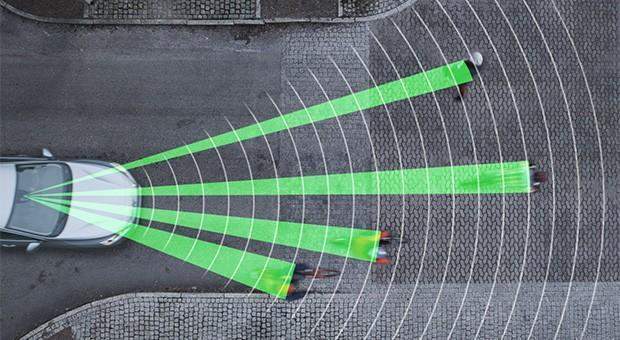
**Photo courtesy: Engadget
The Pedestrian Detection System uses the combination of cameras, radar, and lidar sensors to monitor the surroundings. This allows the driver and the vehicle to react properly.
The cameras search for people and objects in front of the car. Radars send out a radio to measure the time it takes to bounce off and return. A lidar works the same way but makes use of light.
Some pedestrian detection systems work cooperatively with automatic emergency braking systems. This helps the vehicle to stop in time even if the driver fails to react.
How Does a Collision Safety System Work?
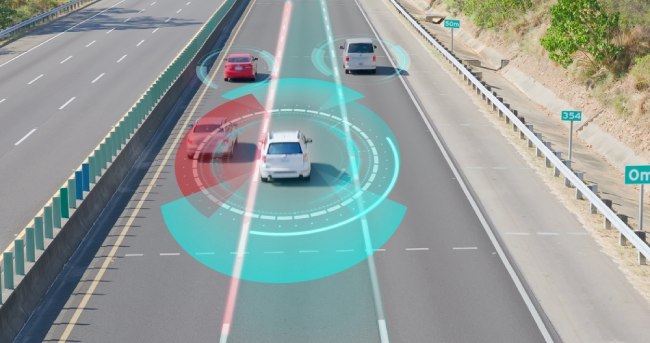
Adaptive Cruise Control (ACC)
Adaptive Cruise Control helps the driver keep a steady speed throughout the ride. The driver can add personal preferences to the system like the distance to the vehicle in front, driving mode, and more to make it a comfortable driving experience.
The speed limit, road curvature, accident history, and some other factors also influence the selected speed.
ACC used to be a premium feature for luxury car models just a few years ago but now with less expensive sensors on the market, you’ll find this system in most vehicles.
Automatic Emergency Braking
This system scans the road for hazards and maintains a safe distance for optimum safety.
Some vehicles do this with radar sensors fitted within the front grille, bumper or air vents. Others depend on cameras usually installed between the front windshield and the rearview camera.
Some may use both. But all of them have a software that constantly calculates the risk of potential crash using the data. The system then triggers FCW and AEB if the parameters are met.
Rear Automatic Emergency Braking (Rear AEB)
The Rear AEB clamps the brake when it detects the possibility of a rear collision – be it with a wall, a parked car, or other objects.
This is a safety addition to avoid damages from low-speed impacts. Some cars combine this system with the Rear Cross-Traffic Alert. This helps detect the passing vehicles when going reverse.
But the Reverse Automatic Emergency Braking System has to be sharply calibrated or parking in a tight space will be a hassle.
Electronic Stability Control (ESC)
This system takes advantage of ABS, traction control, and some other sensor systems to do its job.
ABS electronically pumps the brakes faster than the driver to save the wheel from braking. This helps avoid any understeer or oversteer.
The ESC activates the ABS for one to four wheels, depending on the need of the situation to solve most of the problems.
The ESC also works simultaneously with the Traction Control system to monitor the side-to-side and front-to-back motions. The ESC data is sent to the central computer through the wheel speed sensors, steering angle sensors, and rotational speed sensors.
Parking Assist
Parking assist sensors are installed to the front, back, and sides to detect nearby spaces and obstacles.
The basic version of this system controls the steering while the driver pushes the acceleration and brake pedals.
The upgraded versions can automatically park the car in tight spaces and drive it out.
FAQs
Q. What does a collision warning system do?
A forward collision warning system is an advanced technology that can monitor vehicle speed and the distance between the vehicles. The system can detect when vehicles get too close and warn the driver of an impending crash.
Q. How do I disable the collision mitigation system?
Press the up and down arrows on the display. Make sure to hold them as you turn on the key. Now release the arrow keys. This will turn off the CMS. Once you shutdown and restart the car the CMS will be active so you have to do the steps again.
Q. How do I turn off the Bendix Wingman ACB system?
You need to step on the brake, switch off the cruise control, or turn off the vehicle ignition to disable the Bendix Wingman ACB system.
Q. How do I turn off adaptive cruise control on Cascadia?
Press the ON/OFF button to turn off the system. A green telltale illuminates in the ICU when the cruise control is active. The speed memory remains until you turn off the ignition or disable the cruise control.
Q. Which car has the best collision avoidance system?
2020 Toyota Camry XLE Hybrid, 2020 Honda Accord, 2020 Lexus LS, Toyota Prius, Genesis G80, 2020 Audi A8, 2020 Mercedes Benz E-Class, Chrysler 200, 2020 Tesla Model 3, 2020 Volvo S90, etc. are some of the vehicles in the market with great collision avoidance systems.
Q. What is rear collision mitigation?
A rear collision mitigation system protects drivers who may not pay attention on the roadway. It rolls up the windows and moonroof, pre-tensions the seat belts, and adjusts front seat positions to protect the driver and passengers from a sudden rear impact.
Q. Which sensor is used in a collision-avoidance system?
A collision avoidance system can use ultrasound, millimeter-wavelength radar, laser, LED sensors, or GPS RF detection sensors. They are usually mounted on the front or rear of the vehicle and trigger an audio or visual alarm when detecting an object.
Q. What is an anti-collision sensor?
Anti-collision sensors help avoid and reduce the severity of road accidents. They rely on radar, laser, and camera to detect an obstacle and use a location database to detect approaching signals. They send warnings to the driver but some of them can automatically take corrective actions.


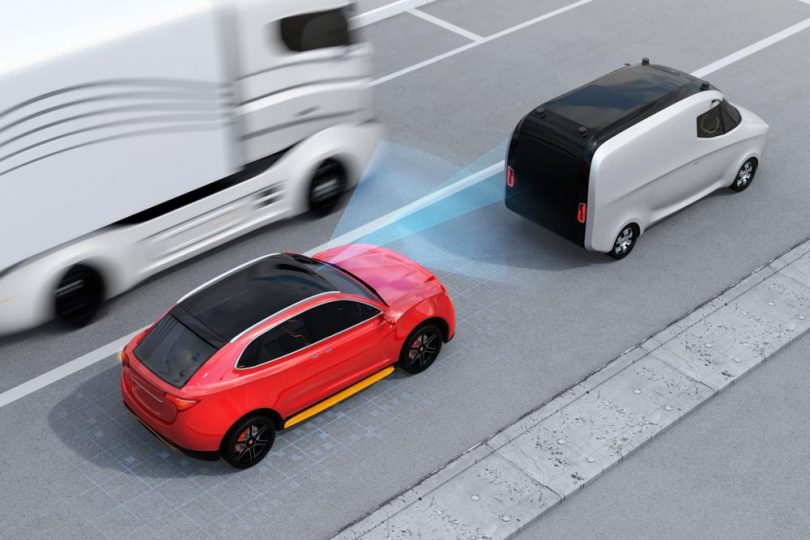


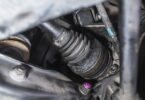
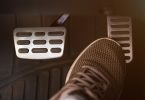



Leave a Comment